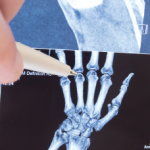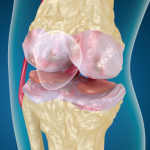The recently updated Osteoarthritis Research Society International (OARSI) guideline offers comprehensive and patient-centered treatment approaches for individuals with knee, hip and polyarticular OA…


The recently updated Osteoarthritis Research Society International (OARSI) guideline offers comprehensive and patient-centered treatment approaches for individuals with knee, hip and polyarticular OA…

A meta-analysis confirms prior research suggesting exercise therapy benefits patients with knee and hip osteoarthritis (OA). The study found greater improvements in pain, function, performance and quality of life in patients with milder, as opposed to more severe, OA…
Arthritis Care & Research |
New research recently found that, when combined with standard treatment, diet and exercise regimens are cost effective for overweight and obese patients with knee OA…

SM04690, an intra-articular injection for knee OA, will soon enter phase 3 trials to assess its effects on pain, joint function and disease…
Carolyn Crist |
(Reuters Health)—Patients with knee osteoarthritis (OA) can add hip-strengthening exercises to their workout to improve the ability to walk and maybe reduce pain, according to a research review. Based on pooled data from eight clinical trials with a total of 340 patients, hip strengthening exercises involving weights or elastic bands would help the most, the…
Obesity is a well-known risk factor for knee osteoarthritis (OA), but data regarding the association of body composition (fat and muscle mass) with the risk of knee OA are lacking. Thus, it is not clear whether the effects of BMI, typically interpreted as effects of obesity, are truly due to excess adiposity rather than to overall loading due to the combined weight of body mass. Misra et al. undertook this study to examine the longitudinal association of body composition categories based on fat and muscle mass with the risk of incident knee OA…

CHICAGO—Joint trauma is one of many potential drivers of osteoarthritis disease activity and structural progression. In Post-Traumatic OA: Pathogenesis, Clinical Evolution and Management, a session at the 2018 ACR/ARHP Annual Meeting, experts discussed the effects of sports and other injuries on even young patients’ joints. Post-traumatic osteoarthritis (OA) may account for 12% of hip, knee…

CHICAGO—Many nonsurgical therapies are available for knee osteoarthritis pain, but they vary greatly in effectiveness. “How should I proceed and figure out what to do with our patients?” asked David T. Felson, MD, MPH, professor of medicine at Boston University School of Medicine, during OA Management Without Surgery in 2018, a session at the 2018…

Renée Bacher |
Traditional X-rays, move over—there may be a new gold standard for joint imaging to assess even the smallest changes that can signal the onset of arthritis, as reported recently in the journal Scientific Reports.1 Utilizing the combined expertise of radiologists, rheumatologists and engineers, University of Cambridge researchers developed an algorithm to monitor the joints of…

Knee osteoarthritis (OA) accounts for more than 80% of OA disease burden and has doubled in prevalence in the mid-20th century in the U.S. when compared with people who lived during early industrial era (1800s to early 1900s).1 Currently, the diagnostic and treatment armamentaria are limited. Disease progression is measured by joint space narrowing on…